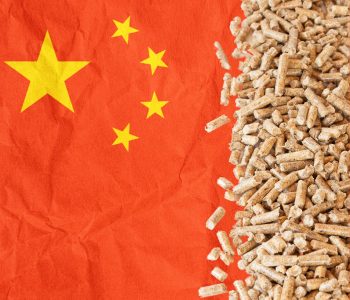Food security prompts China to cut soybean meal from animal feed
China’s Ministry of Agriculture launched a three-year action plan to reduce the use of soybean meal in animal feed, as the country continues to try to reduce its heavy dependence on soybean imports. This was announced last Friday April 14th.
- The new plan proposes that the proportion of soybean meal in animal feed be reduced to less than 13 percent by 2025. Dropping from a 14.5 percent in 2022.
During 2021 authorities of the world’s largest soybean importer had already issued guidelines for the animal feed industry, recommending lower proportions of soybean meal.
The new plan “guides the feed industry towards a reduction in the amount of soybean meal, promoting savings and reducing the use of grains for feed. Contributing to ensure a stable and secure grain supply as well as for other agricultural products,” said the document published by the Ministry of Agriculture and Rural Affairs.
The new target aimed at reaching less 13 percent by 2025 is slightly lower than the previous one set at 13.5 percent. Yet, the direction and aim has not changed, said Lief Chiang, a senior analyst at Rabobank.
“The goal is to build a more resilient supply chain amid geopolitical risks,” he said.
China buys more than 60% of the world’s soybeans, well over 90 million tons per year, mainly from the United States and Brazil.
“On the one hand, they would like to decrease the absolute volume of soybean imports, but for now, as a contingency, they want to diversify and further decrease their dependence, especially on the United States,” Chiang added.
The push to reduce the use of soybean meal has been successful so far, helped in large part by rising prices of the protein-rich ingredient in recent years, which has led feed manufacturers to reduce its use.
- Rabobank estimated in January that the proportion could fall to 12 percent by 2030, reducing China’s soybean imports to 84 million tons.
- This year, imports will range among the 95 million tonnes, Chiang said.
The new plan could have a bigger impact. As China could reduce soybean meal consumption by at least 3 million tons a year, said Liu Bing, an analyst at Donghai Futures. Which would be the equivalent of 4 million tons of soybeans.
Imports could fall to 82 million tonnes by 2025, he said. As feed manufacturers turn towards using greater quantities of rapeseed, sunflower seed and synthetic proteins to replace soybean meal.
Lower soybean imports will result in lower soybean production. However, this will lead towards a greater demand for palm oil imports to compensate for such reductions, he added.
You may also like to read: “China’s soybean imports expected to rise for the 2023 to 2024 period.”
Source: Food security prompts China to cut soybean meal from animal feed
